What Hi-Fi? Verdict
The Electa Amator IIIs are exceptional performers in many ways with a sophisticated and musical presentation
Pros
- +
Expressive and musical performance
- +
Fine low-end authority
- +
Strong dynamics
- +
Excellent build and finish
Cons
- -
Don't excel with aggressive music
Why you can trust What Hi-Fi?
When we think of Italian high-end speakers, the Sonus Faber brand comes to mind. Founded in 1983, the company established its distinctive design language early, with curvaceous solid wood panels mated to classy leather wrapped fronts featuring on all its products.
The original Electa Amator was among that first batch of designs and was instrumental in establishing the brand as a purveyor of luxurious yet sonically gifted high-end speakers.
The company has changed much over the years with ownership shifting hands a number of times. It’s now part of the McIntosh group alongside high-end luminaries such as Audio Research, Wadia and of course McIntosh itself.
Being part of such a group has great benefits in terms of resources and expertise, but does run the risk of brand identity dilution. This is something Sonus Faber is keen to avoid, and a good way of doing that is by producing products that have a solid link to past glories. That’s where the Electa Amator III comes in.
Build
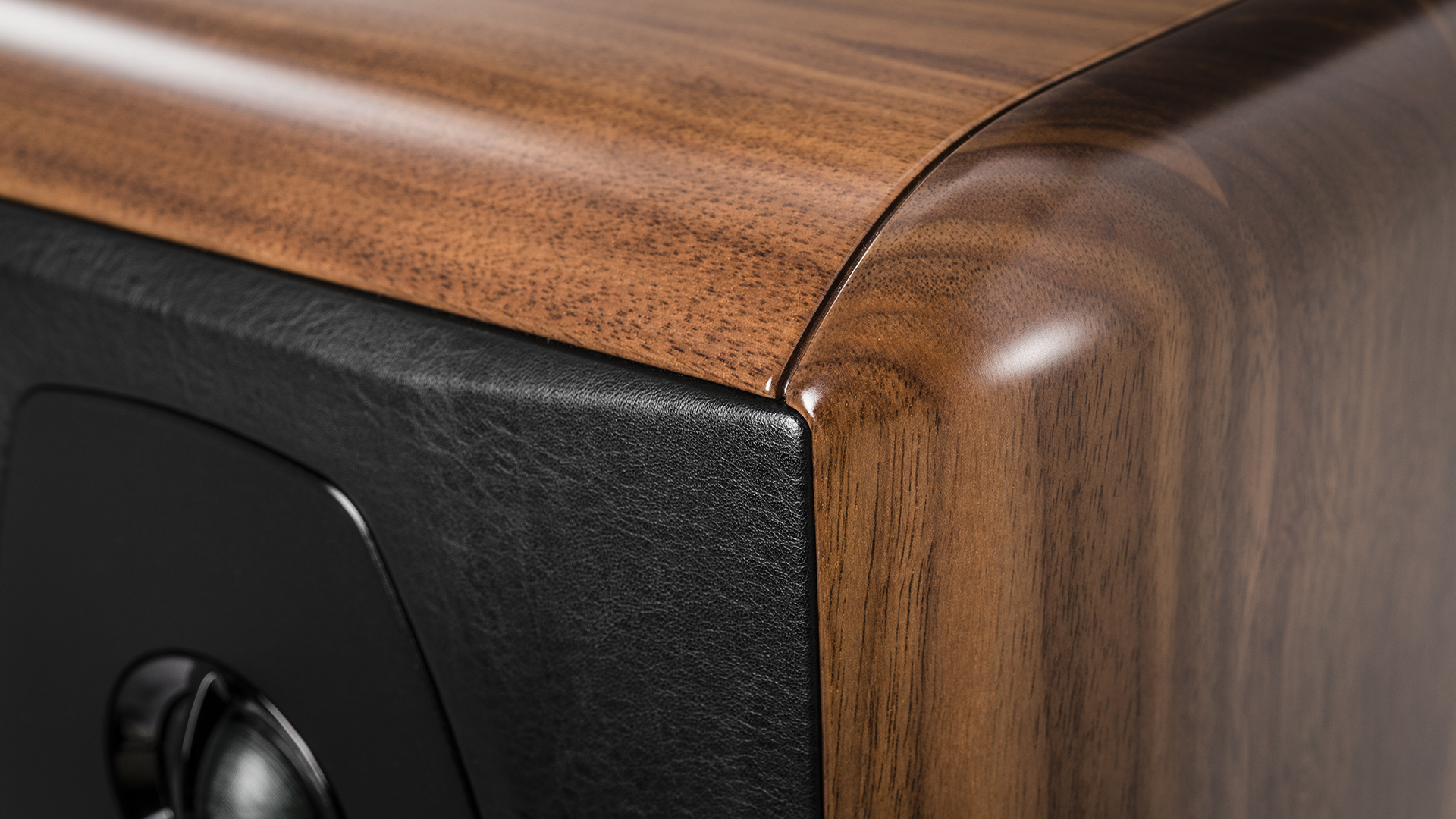
A casual glance confirms that this new model is made firmly in the mould of the two previous generations of Electa Amators. It remains a compact two-way standmounter, in this case standing just short of 38cm tall. The 28mm soft dome tweeter is shared with the company’s top-end Homage Tradition and reference products, and is essentially the best high frequency unit it makes.
However, the 18cm mid/bass is designed specifically for the new Amator and isn’t yet shared with any other sibling. It uses an exotic cone made of an air-dried blend of cellulose pulp, kapok, kenaf and other natural fibres. The idea is to obtain the best balance between rigidity, lightness and resonance behaviour.
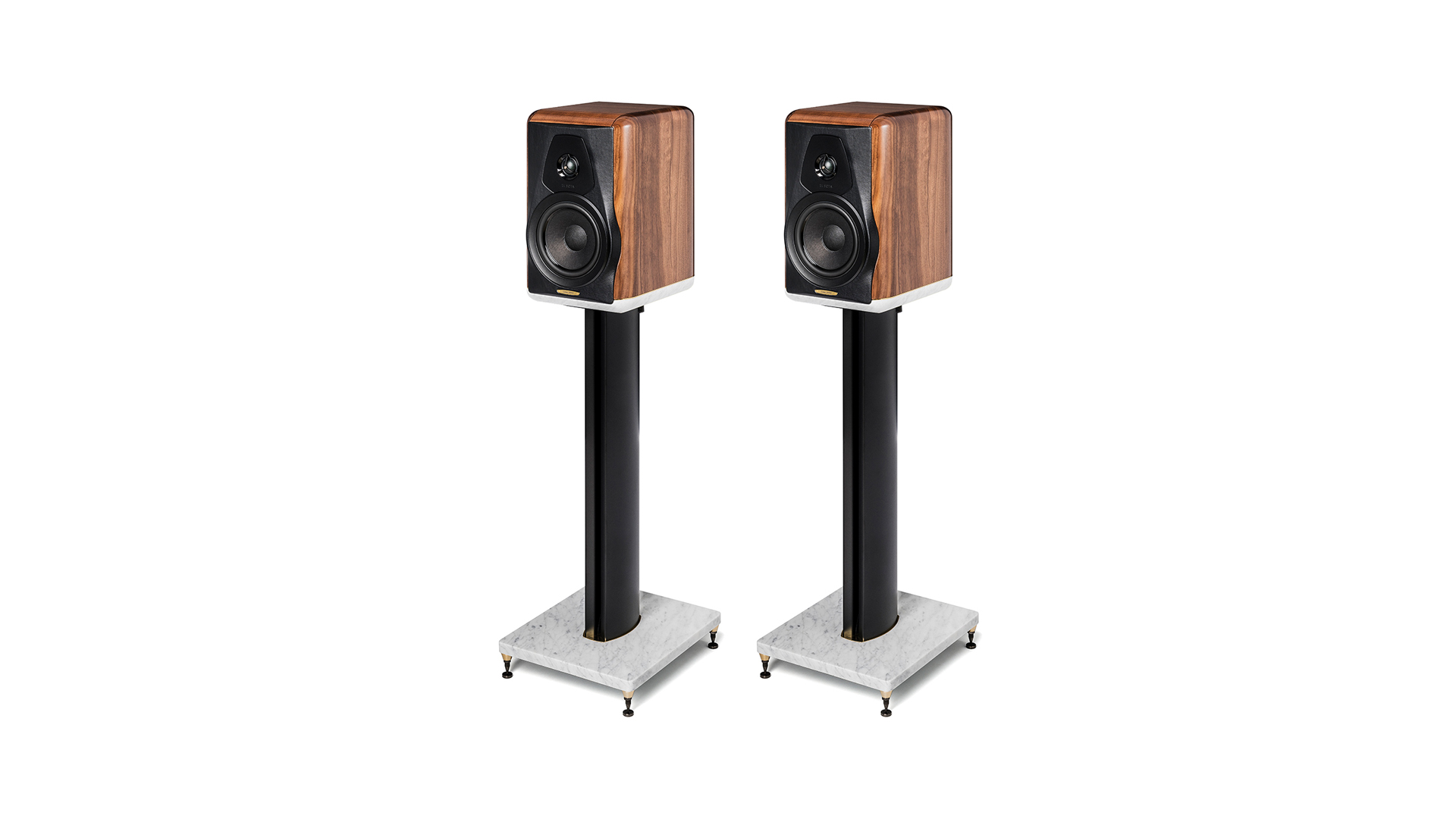
Type 2-way standmount vented loudspeaker system
Frequency response 40Hz to 35,000Hz
Sensitivity 88dB
Nominal impedance 4ohm
Power output 35W-200W
Speaker
Dimensions (hwd) 37.5 x 23.5 x 36cm
Weight 14.6kg (each)
Stand
Dimensions (hwd) 28 x 12 x 14cm
Weight 9.5kg (each)
This elaborate cone is mounted in a cast aluminium chassis and driven by a motor system that’s designed to allow high excursion with low distortion, so improving dynamics. The speaker’s low frequency output is tuned by a large diameter rear-firing reflex port.
A carefully calibrated crossover, packed with high-quality parts such as ClarityCap capacitors and Jantzen inductors, links the two drivers. The crossover frequency is an entirely conventional 2.5kHz. Connection to the speaker is via two pairs of rather lovely multi-way speaker terminals. These are beautifully made and thoughtfully shaped to make handling easier.
Being a Sonus Faber speaker, we’re not surprised to find that the cabinet is made of solid walnut rather than the usual veneered MDF. The 25mm thick panels use a damped, sandwich construction to help rigidity and resonance behaviour, and once the 30mm thick Carrera marble base and thin brass plate are added, the result is an impressively sturdy structure. High quality, soft leather covers both of the front and back panels, which feels lovely to the touch.
The whole structure adds up to a hefty 14.6kg and feels so classy that few rivals can match its aura of luxury.
Compatibility
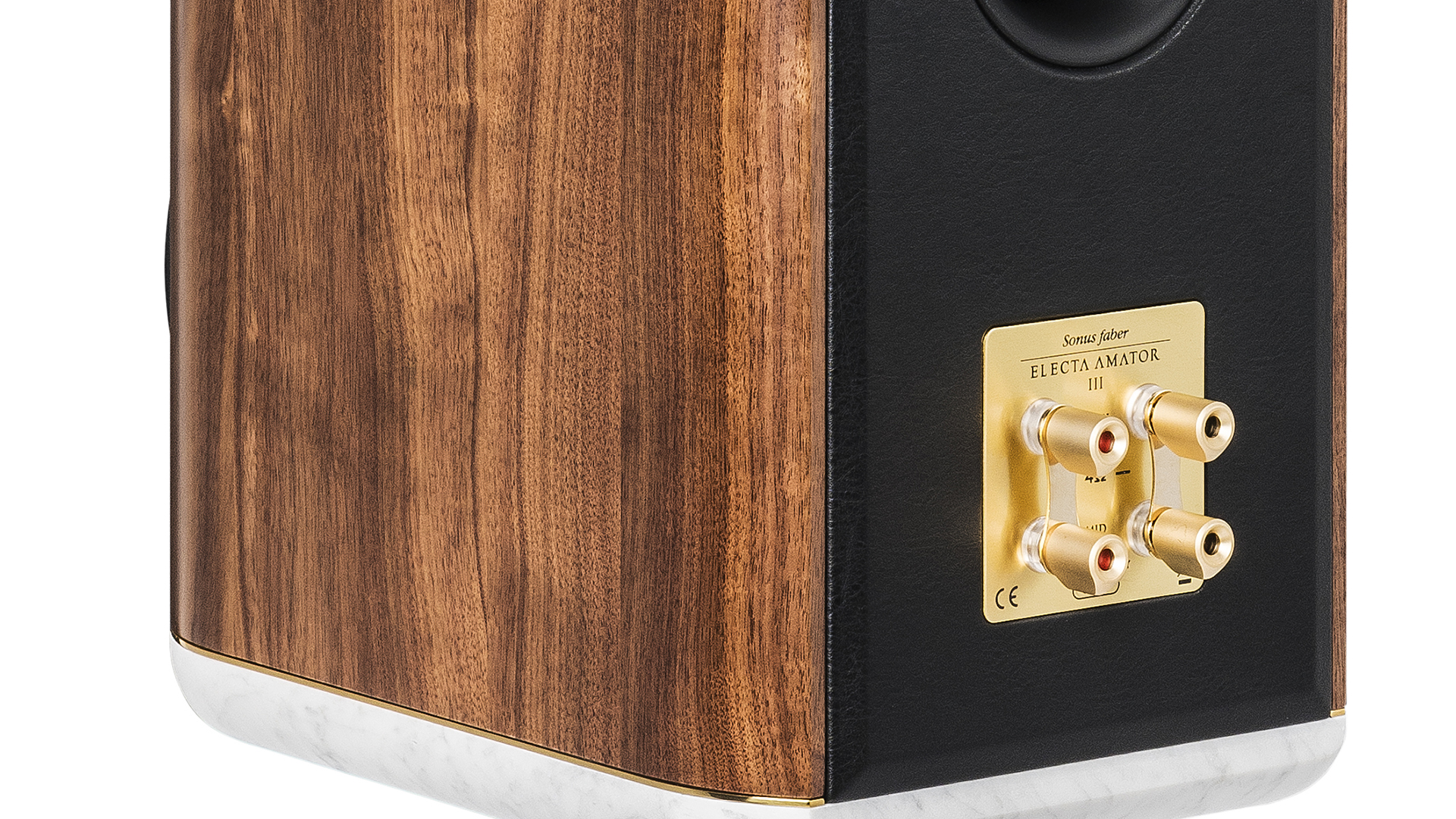
The performance of any standmounter is heavily reliant on the quality of the support it sits on, and these boxes are no different. While its possible to use conventional stands, we would highly recommend going for the dedicated ones.
They’re premium priced at £1495, but match the speakers so well, visually and sonically, that going for any other option simply doesn’t make sense. The construction of these 72cm tall supports mirrors that of the Amators by using a slab of Carrera marble for their base.
The almost mandatory use of these stands takes the complete speaker price to pretty much five figures. That’s a massive amount for such modestly sized standmounters and positions the Electa Amator III well above excellent established rivals such as Wilson Benesch’s Precision P1s (£5995/$8800), KEF Reference 1s (£5999/$7499 with stands) and B&W’s 805 D3s (£5100/$7000 with stands).
It’s with that forefront in our minds that we connect the Sonus Fabers to our reference system. Any speakers at this level positively demand a top class set-up. Ours is fronted by Naim’s ND 555/555 PS DR music streamer and Technics SL-1000R record player and the amplification is Burmester’s hugely capable 088/911 Mk III pre/power combination. We use two wiring looms – one based around Chord’s Signature cables and the other Vertere’s Redline.
We don’t have to work too hard to get a great sound from the Electas. We place them out into the room and away from the sidewalls, with just a bit of angle towards the listening position. This gives us a wide-open sound stage that’s nicely layered while still delivering reasonably balanced tonality.
Sound
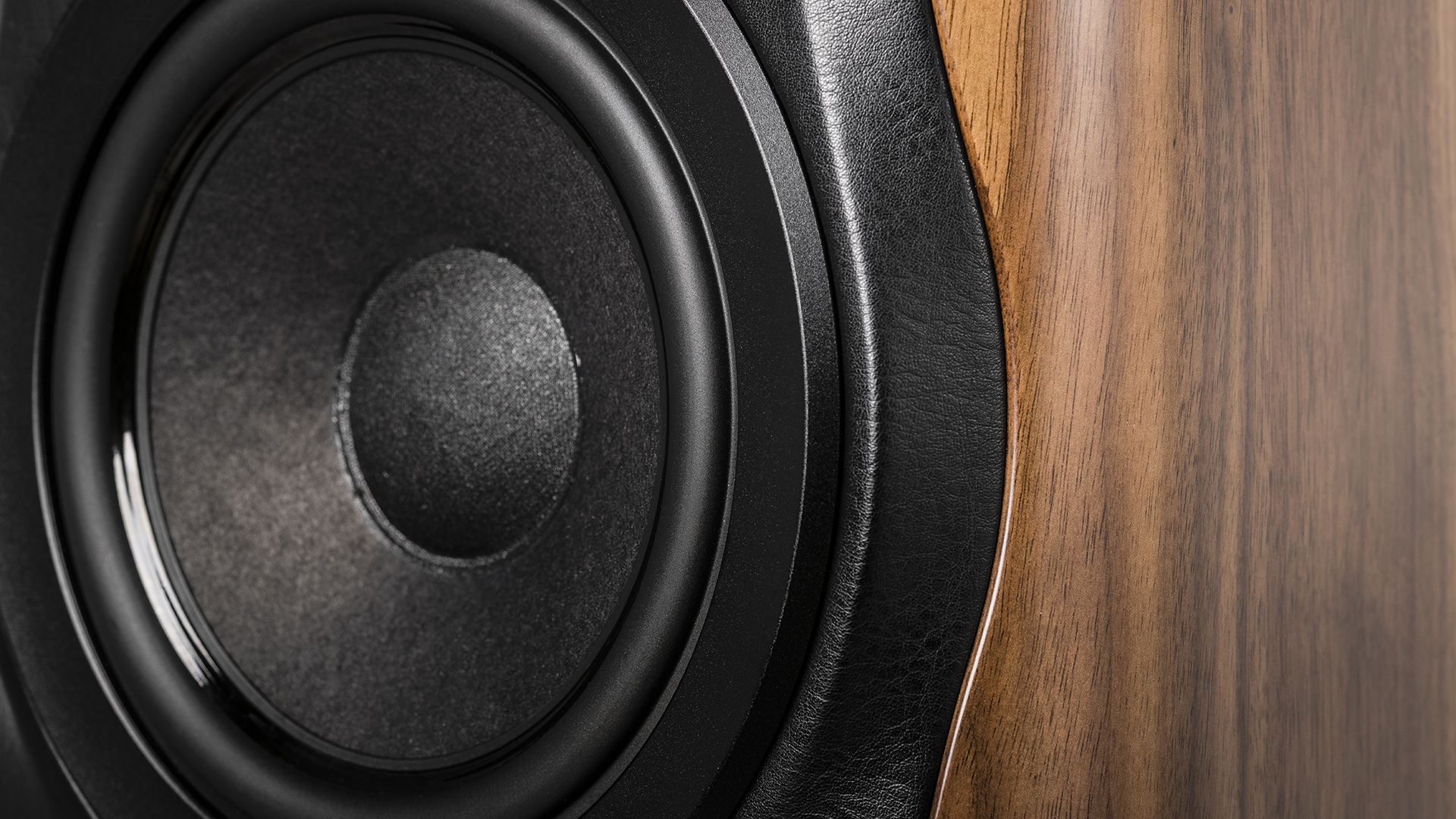
We listen to Arvo Part’s Tabula Rasa, it doesn’t take long to realise that Sonus Faber's engineers haven’t gone for outright neutrality here. These speakers seem a little bright in the treble leaving the midrange sounding slightly recessed in comparison. Ensuring that the speakers don’t point directly towards us balances this characteristic somewhat.
It seems to be a subtle but deliberate ploy to make them characterful to listen to, and, on the whole, it succeeds. As long as your system is decently refined and balanced there shouldn’t be an issue. The advantage of such an approach is that these speakers entirely avoid sounding sterile or overly analytical.
Overall, they deliver Tabula Rasa brilliantly. The quality and refinement of that dome tweeter means that this difficult recording never sounds aggressive, as it sometimes can through some of the opposition. Instead, it’s a wonderfully expressive presentation that excels in terms of dynamics, particularly in the midrange.
We can’t recall comparable speakers that track changes of intensity through the mid frequencies with as much skill or enthusiasm as these. The Electa Amators really bring the excitement and emotion in the music to the fore, and, as we find out later, work to bring the best out of vocals.
Low frequencies are another strength. These are fairly compact speakers so they’re never going to produce the kind of bass that makes furniture rattle. But, that doesn’t stop these standmounters from sounding impressively authoritative or from delivering bass frequencies with palpable punch and muscle. Pleasingly, low-end agility goes hand in hand with this brawn; the standmounters sounding articulate and tuneful.
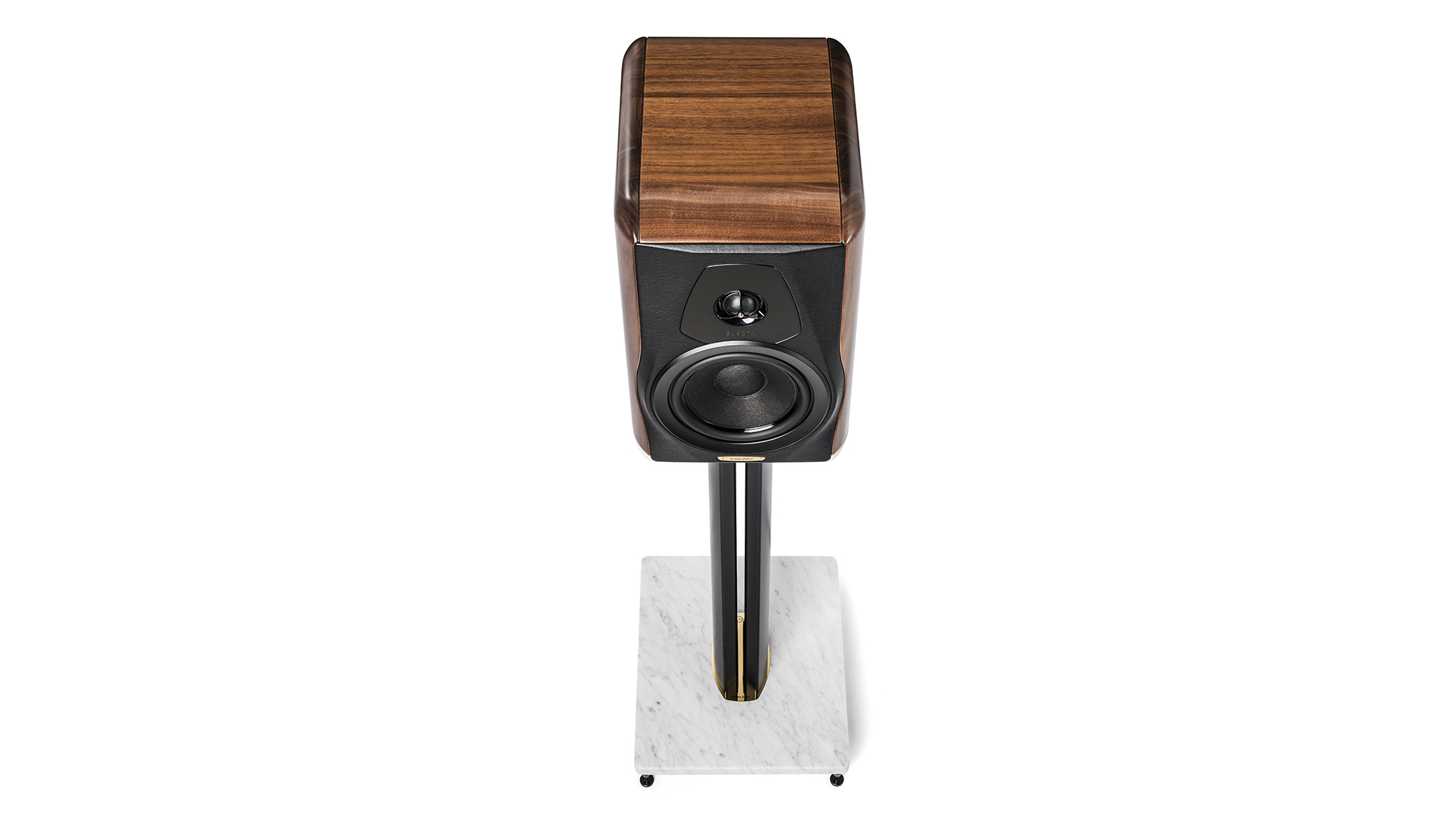
We’re less surprised by the quality of the stereo imaging. Speakers of this type quite often do well in this respect and the Electas are no different. They cast a huge sound stage, and when we close our eyes it’s impossible to locate where the speakers are within it.
These traits speak well of the low resonance cabinet design and carefully calibrated crossover network. The stereo presentation is precise too, with instruments locked in position and remaining stable even as the piece becomes demanding.
We switch to Melody Gardot’s The Absence and the Sonus Fabers revel in the album’s sumptuous production and complex rhythms. They render Gardot’s rich tones brilliantly with a level of expression and nuance that’s as good as anything we’ve heard at this level.
These speakers bristle with life, delivering rhythms and dynamic shifts in a surefooted way. They’re not the last word in rhythmic precision or outright drive, but there’s enough of both to leave us entertained.
We listen to a whole range of music from Michael Kiwanuka and Kanye West to Tchaikovsky’s grand symphonies and certain things become clear over time.
First off these Sonus Fabers are hugely capable performers. When it comes to midrange expression and articulation they are exceptional. With the right music they can sound almost magical, and on more than one occasion had us wondering if anything could sound better. It can, of course, but Sonus Faber has engineered such a persuasive sonic character that it’s easy to be convinced otherwise.
Verdict
Once partnered with suitably talented electronics the Sonus Faber Electa Amator III disguise their relatively small dimensions brilliantly, sounding a lot more muscular and full-bodied than anyone would expect when used in anything but the largest of rooms. They’re not intended to be ultra-neutral studio monitors, so if you want the last word in tonal accuracy (or outright resolution for that matter) look elsewhere.
The same applies if you listen to music that requires aggression to work. If your music collection is packed full of hardcore hip-hop or rock then you’re likely to find the Electa Amator IIIs just a touch too polished and polite for your tastes. They don’t quite have that ultimate degree of bite such music demands and so the results are a little well mannered for our tastes.
Regardless, we can’t help but love them. They retain the charm of their predecessors and, when suitably pampered, remind us why we fell in love with high-end hi-fi in the first place.
SCORES
- Sound 4
- Compatibility 4
- Build 5
MORE:
What Hi-Fi?, founded in 1976, is the world's leading independent guide to buying and owning hi-fi and home entertainment products. Our comprehensive tests help you buy the very best for your money, with our advice sections giving you step-by-step information on how to get even more from your music and movies. Everything is tested by our dedicated team of in-house reviewers in our custom-built test rooms in London, Reading and Bath. Our coveted five-star rating and Awards are recognised all over the world as the ultimate seal of approval, so you can buy with absolute confidence.

